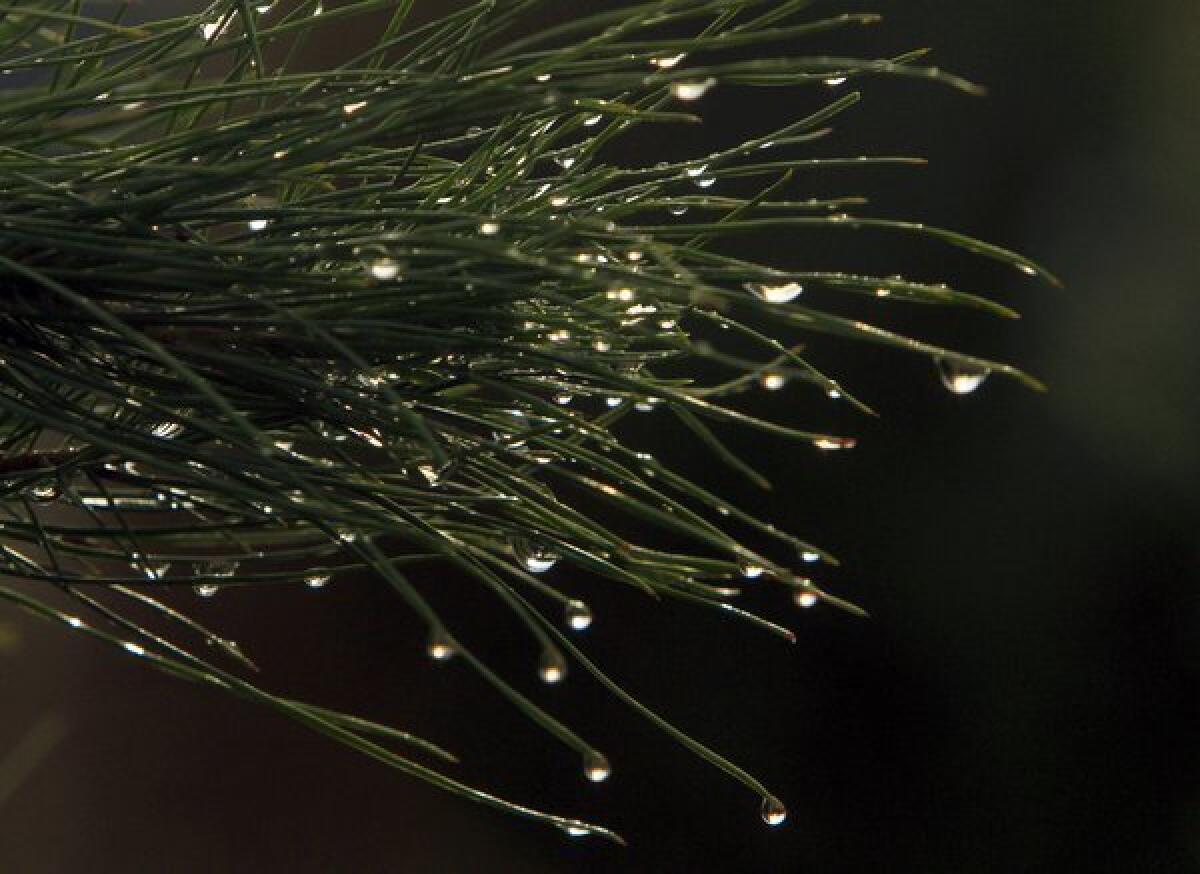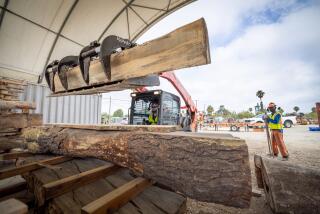O Tannenbaum, how sustainable are thy branches?

- Share via
Your recycling bin is filled twice as high as your garbage bin. You buy carbon offsets to make up for the climate havoc caused by your jet-setting ways. You would no more be caught buying non-organic produce than taking it home in a plastic bag from the checkout counter.
You are, in short, a magnificent green god(dess). But where are you going to find an environmentally friendly Christmas tree?
Like the paper vs. plastic conundrum, the question of what kind of Christmas tree is greener -- real or artificial? -- has been bedeviling environmentally conscious consumers for years, although by now there seems to be pretty wide-scale consensus that natural trees have the edge. One study, for example, found that you’d have to use an artificial tree for roughly 20 years before its negative impacts on natural resources and climate make up the difference between it and natural trees. And because, in reality, most people throw their faux firs away after six years of use, the kind of tree that drops needles onto the carpet is still the most sustainable choice.
Natural trees are considered better because during the eight to 12 years they’re in the ground, they suck up carbon dioxide and provide habitat for wildlife. Unlike artificial trees, they can also be recycled rather than taking up space in landfills. And they don’t have to be shipped to your local store from China, although if you live in Los Angeles, chances are you’re getting a tree that has been trucked to town from Oregon. Still, Portland’s a lot closer than Beijing.
Yet aside from the question of natural vs. artificial, are there some real trees that are greener than others? Maybe.
No matter how they’re operated, Christmas tree farms tend to have a low impact on the environment, because the crop spends years in the ground and trees tend to be grown in rainy areas that don’t require irrigation. Yet many tree farms do use pesticides to fend off damaging insects, as well as synthetic fertilizers. These can end up in nearby streams or other waterways and cause environmental harm, and possibly endanger the health of tree-farm workers. A nascent program at Oregon State University Extension aims to reduce these impacts by certifying sustainable tree farms.
Under the Socially and Environmentally Responsible Farms program, farms must take steps to protect wildlife and waterways, conserve soil and water resources, conduct health and safety training for workers and promote responsible farming practices. They also must practice Integrative Pest Management, a system for monitoring harmful insects that assures pesticides are used only as a last resort. To ensure compliance, SERF-certified farms are inspected by the Oregon Department of Agriculture. The program is just getting off the ground and its environmental benefits are still unclear, but in the absence of any other way to tell the difference between responsible growers and wilderness pillagers, it seems like a pretty good solution. Be warned, though: Just like with organic produce, organic Christmas trees tend to cost a little more.
Five Oregon tree farms have SERF certification, mostly large wholesalers that sell to retail tree-lot operators. Doubtless some of their trees can be found as far south as Los Angeles, but they’re very hard to find; as far as I can tell only one local tree lot, Santa & Sons in the San Fernando Valley, has made an active effort to promote its SERF status. Besides its big lot in Valley Glen, it sells trees at Bel Air Foods market in Bel Air. And if you must have a tree that’s too big to fit under the hatch of your Prius, they deliver.
ALSO:
Obama’s ‘balanced’ approach hits a Democratic wall
Subscribe to Dan Turner on Facebook
More to Read
A cure for the common opinion
Get thought-provoking perspectives with our weekly newsletter.
You may occasionally receive promotional content from the Los Angeles Times.










